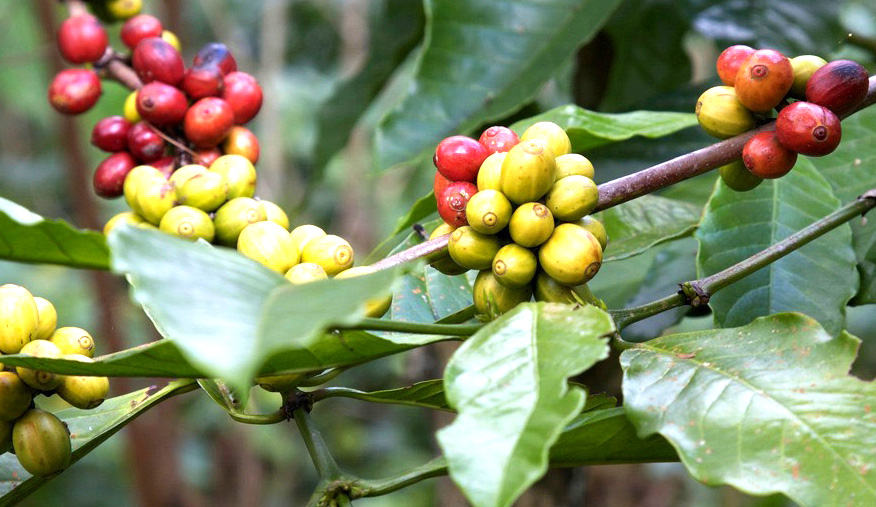
The Rubiaceae coffee variety refers to the botanical family Rubiaceae, which includes the Coffea genus — the source of all the world’s coffee.
This vast family of tropical plants is sometimes called the “coffee family”, and it plays a vital role in global agriculture, ecology, and economy.
From the delicate Arabica to the strong Robusta, every cup of coffee we drink traces its origins back to the Rubiaceae family.
🌿 What Is the Rubiaceae Family?
The Rubiaceae is a large family of flowering plants, encompassing more than 600 genera and over 13,000 species.
It is primarily distributed across tropical and subtropical regions, thriving in humid forests and mountain areas.
Famous members of the Rubiaceae family include:
- Coffea — the genus that produces coffee beans.
- Cinchona — source of quinine, used to treat malaria.
- Gardenia — ornamental plant with fragrant flowers.
- Ixora — tropical flowering shrub common in gardens.
The Rubiaceae family is known for its glossy leaves, fragrant flowers, and valuable alkaloids, which include caffeine and quinine.
🌍 The Coffea Genus: Coffee’s Place in Rubiaceae
Within the Rubiaceae family, the Coffea genus contains over 120 recognized species, although only a few are cultivated commercially.
The three most important coffee species are:
- Coffea arabica (Arabica coffee): Smooth, aromatic, and low in caffeine — about 60–70% of global production.
- Coffea canephora (Robusta coffee): Strong, bold, and high in caffeine — about 30–40% of production.
- Coffea liberica (Liberica coffee): Rare, large-beaned coffee with a fruity and floral profile.
Other lesser-known species — such as Excelsa, Dewevrei, and Stenophylla — also belong to the Rubiaceae family and contribute to biodiversity and future hybrid development.
🧬 Botanical Characteristics of Rubiaceae Plants
Rubiaceae plants share several distinct botanical traits, including:
- Simple, opposite leaves with smooth edges.
- Interpetiolar stipules (tiny leaf-like structures between leaves).
- Small, tubular flowers often white or pale in color.
- Berry or drupe-type fruits, which in Coffea become the coffee cherry.
The coffee plant (Coffea spp.) typically grows as a shrub or small tree, producing red or yellow cherries containing two seeds — what we know as coffee beans.
🌱 The Ecological Role of Rubiaceae Plants
The Rubiaceae family plays a significant role in tropical ecosystems.
Its members provide food and habitat for birds, insects, and mammals, and contribute to soil fertility and forest regeneration.
Coffee plants, in particular, are often shade-grown under taller forest trees, creating balanced agroforestry systems that protect biodiversity.
Additionally, some Rubiaceae species — such as Cinchona and Uncaria — are valuable for their medicinal and pharmacological properties, used in traditional and modern medicine.
☕ Economic Importance of Rubiaceae
The Rubiaceae family has tremendous global importance, largely due to the Coffea genus.
Coffee is one of the most traded commodities in the world, supporting the livelihoods of over 25 million farming families across more than 70 countries.
Key economic contributions include:
- Coffee export earnings for tropical nations.
- Local employment in harvesting, processing, and trade.
- Ecotourism and specialty coffee industries.
- Conservation of tropical agroforests through shade-grown coffee.
In addition to coffee, Rubiaceae plants such as Cinchona (source of quinine) have saved millions of lives, and others like Gardenia contribute to horticulture and perfumery.
🌾 Coffee Species Derived from Rubiaceae
Because the Rubiaceae family contains the genetic base of all coffee, its species are essential for hybridization and climate adaptation.
Some important coffee species and hybrids include:
- Coffea arabica × C. canephora (Arabusta) — combines quality and resilience.
- C. liberica var. dewevrei (Excelsa) — valued for fruity, complex flavor.
- C. stenophylla (Sierra Leone coffee) — rediscovered species tolerant to heat and drought.
- C. eugenioides — one of the wild parents of Arabica coffee.
This genetic diversity within Rubiaceae helps scientists develop more resilient coffee plants for a changing climate.
🌸 Where Rubiaceae Plants Grow
The Rubiaceae family is cosmopolitan, but its diversity is greatest in tropical regions such as:
- Central and South America (including Colombia, Brazil, and Venezuela)
- Africa (especially Ethiopia, Congo, and Madagascar)
- Southeast Asia (Vietnam, Indonesia, and the Philippines)
These regions also happen to be the heartlands of coffee cultivation, showing the family’s natural adaptation to tropical climates.
☕ Why the Rubiaceae Family Matters for Coffee Lovers
Understanding Rubiaceae helps coffee drinkers appreciate how diverse and complex coffee’s origins truly are.
Every sip of coffee connects to a vast network of botanical relatives — plants that share similar chemistry, fragrance, and ecological significance.
The family’s traits, from caffeine production to flower fragrance, all contribute to the unique sensory experience that makes coffee so beloved around the world.
❤️ Final Thoughts
The Rubiaceae coffee variety represents much more than a single type of bean — it’s the entire plant family that gave birth to coffee as we know it.
From the Arabica trees of Ethiopia to the Robusta shrubs of Uganda, all belong to this extraordinary lineage.
It’s a reminder that coffee is not just a beverage — it’s a living expression of botany, biodiversity, and evolution within one remarkable tropical family.
☕ Rubiaceae — the family that brought coffee to the world.
DeliciousPath: Enjoyment in Every Moment
Explore the Gourmet on Board category for exquisite flavors that elevate your meals, even when you’re on a boat, and the Coffee category for aromatic coffee blends that make every moment special. DeliciousPath is here to turn every experience into something unforgettable!






















